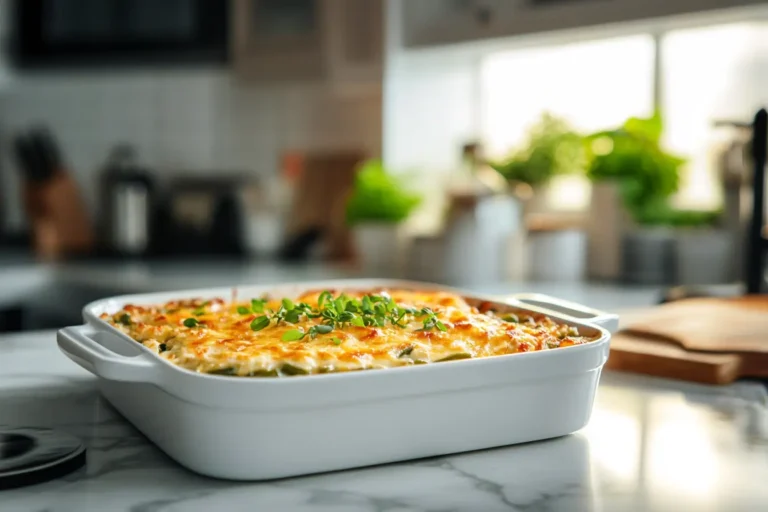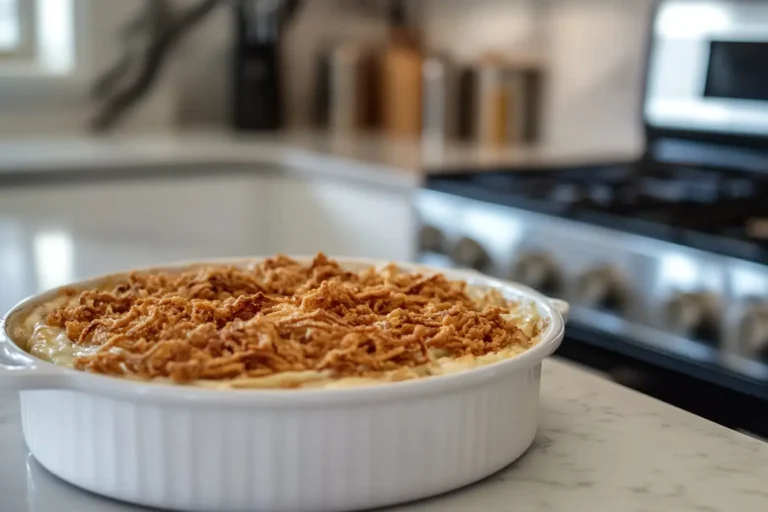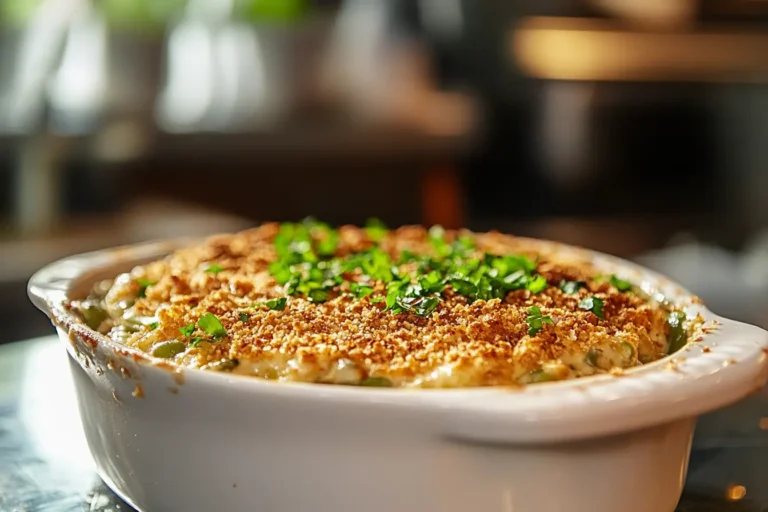The Best Fluffy Pancakes recipe you will fall in love with. Full of tips and tricks to help you make the best pancakes.

Table of Contents
Why Classic Lasagna is a Beloved Comfort Food
Is there anything better than the comforting layers of a well-made classic lasagna? With its rich, meaty sauce, creamy ricotta filling, and perfectly melted cheese, lasagna has earned its spot as a staple in homes worldwide. Whether it’s a family dinner or a dish to impress guests, lasagna is a surefire crowd-pleaser. Let’s dive into the art of mastering this iconic dish.
The Essential Ingredients for Perfect Classic Lasagna
Getting the right ingredients is half the battle. Here’s everything you’ll need to make the ultimate classic lasagna:
| Ingredient | Quantity |
|---|---|
| Lasagna noodles | 12 sheets |
| Ground beef | 500g (1 lb) |
| Italian sausage (optional) | 250g (1/2 lb) |
| Marinara sauce | 3 cups |
| Ricotta cheese | 2 cups |
| Mozzarella cheese | 3 cups (shredded) |
| Parmesan cheese | 1 cup (grated) |
| Egg | 1 large |
| Italian seasoning | 1 tbsp |
| Garlic | 2 cloves (minced) |
💡 *Pro Tip: For a more authentic touch, use fresh lasagna sheets and homemade marinara sauce. It takes the flavor to the next level!*
Choosing the Right Lasagna Noodles: Fresh vs. Boxed
When it comes to noodles, you’ve got options. Fresh lasagna sheets create a delicate, melt-in-your-mouth texture, while boxed noodles offer convenience. Whichever you choose, ensure they’re cooked or prepped properly to avoid a soggy mess.
The Role of Marinara Sauce: Homemade or Store-Bought?
Marinara sauce is the soul of lasagna. A homemade sauce, simmered with tomatoes, garlic, and herbs, offers unparalleled depth. Short on time? Store-bought marinara can work too—just enhance it with a sprinkle of Italian seasoning or fresh basil.
Key Cheeses for Flavor: Ricotta, Mozzarella, and Parmesan
The cheese trifecta—ricotta, mozzarella, and Parmesan—is what makes lasagna irresistible. Ricotta gives creaminess, mozzarella provides the perfect gooey stretch, and Parmesan adds a nutty punch. Mix these in the right proportions, and you’re golden.
Selecting the Best Meat: Beef, Sausage, or a Combination
For a hearty meat sauce, ground beef is the classic choice. Add Italian sausage for an extra layer of flavor. Not a meat lover? Substitute with plant-based crumbles for a vegetarian twist.

Preparing the Classic Lasagna: Step-by-Step Guide
Now that you’ve got your ingredients ready, it’s time to start assembling your lasagna masterpiece. Follow this step-by-step guide for a foolproof method.
Cooking the Meat Sauce: Balancing Flavors
Start by sautéing minced garlic in a large skillet with a drizzle of olive oil. Add the ground beef and sausage, cooking until browned. Drain any excess fat, then stir in the marinara sauce and season with Italian seasoning, salt, and pepper. Let it simmer for 15-20 minutes to deepen the flavor.
💡 *Pro Tip: Add a pinch of red pepper flakes to the sauce if you like a little heat.*
Prepping the Ricotta Cheese Mixture for Creaminess
In a bowl, combine ricotta cheese, an egg, Parmesan cheese, and a pinch of salt. Mix until smooth. This mixture adds a creamy, luscious layer that ties the dish together.
Layering Your Lasagna for Perfect Texture

Here’s where the magic happens! Start with a thin layer of meat sauce at the bottom of your baking dish to prevent sticking. Add a layer of lasagna noodles, followed by the ricotta mixture, more meat sauce, and shredded mozzarella. Repeat until all ingredients are used, ending with a generous layer of mozzarella on top.
✨ *Layering order matters: Sauce → Noodles → Ricotta → Sauce → Mozzarella → Repeat!*
Baking Tips: Achieving the Golden, Cheesy Crust
Cover your lasagna with aluminum foil to prevent the top from over-browning. Bake in a preheated oven at 375°F (190°C) for 25 minutes. Then, remove the foil and bake for another 15-20 minutes until the cheese is golden and bubbly.
🍽️ *Let the lasagna rest for 10-15 minutes before slicing to ensure clean layers.*

Common Problems and Solutions in Making Classic Lasagna
Even the best cooks run into trouble sometimes. Here are common issues and how to fix them:
Why Does My Lasagna Turn Out Watery?
Watery lasagna is often caused by too much moisture in the sauce or un-drained ricotta. To fix this, simmer your sauce longer to thicken it, and pat your ricotta cheese dry with a paper towel.
How to Prevent Overcooking or Burning the Top Layer
Always cover your lasagna with foil during the initial bake. Removing it in the last 15 minutes allows the cheese to brown without burning.
Solving Issues with Uneven Cooking
If some parts of your lasagna are undercooked, it might be due to uneven layering or cold ingredients. Make sure your sauce and ricotta mixture are at room temperature before assembling.
Tips and Tricks for the Best Classic Lasagna Every Time
Lasagna is an art, but with a few insider tips, you can make every bake your best yet. Let’s dive into some pro tips to perfect your dish:
Adding Bechamel Sauce for an Italian Touch
Want to take your lasagna to the next level? Add a layer of creamy béchamel sauce (a simple mix of butter, flour, and milk) to your lasagna. It’s a classic Italian addition that makes the dish even more decadent.
💡 *Bechamel adds a velvety texture and balances the richness of the meat sauce.*
Letting the Lasagna Rest Before Serving

This might be the hardest part: waiting. After baking, let your lasagna rest for at least 15 minutes. This step helps the layers set, making it easier to slice and serve without it falling apart.
Making Lasagna Ahead of Time and Freezing It
Lasagna is the ultimate make-ahead dish. Assemble it the day before, cover it tightly, and refrigerate it until ready to bake. Want to freeze it? Wrap it in foil and plastic wrap, and it’ll keep for up to 3 months. Simply thaw overnight in the fridge and bake as directed.
Variations of Classic Lasagna to Try
There’s more than one way to enjoy lasagna. Try these variations to switch things up:
Vegetarian Lasagna with Fresh Vegetables
Replace the meat sauce with roasted vegetables like zucchini, eggplant, and spinach. Add a layer of pesto for an extra flavor punch. Even meat-lovers will adore this lighter take!
Lasagna with Cottage Cheese Instead of Ricotta
Not a fan of ricotta? Cottage cheese is a great substitute. Blend it for a smoother texture, and you’ll barely notice the difference. Bonus: it’s a slightly healthier option!
Gluten-Free Lasagna with Alternative Noodles
For those avoiding gluten, there are plenty of alternatives like zucchini slices, gluten-free pasta, or even cauliflower sheets. You can enjoy all the flavor without the wheat.
✨ *Experiment with ingredients to make lasagna your own—there’s no wrong way to layer love.*
Serving and Pairing Ideas for Classic Lasagna
Lasagna is a meal in itself, but pairing it with the right sides and drinks can elevate your dining experience:
Best Side Dishes to Complement Lasagna
- Garlic bread or focaccia for that extra carb hit.
- A fresh Caesar salad to balance the richness of the lasagna.
- Roasted vegetables like asparagus or Brussels sprouts for a hearty touch.
Wine Pairings for a Classic Italian Meal
Lasagna pairs beautifully with bold red wines. Opt for a Chianti, Barolo, or even a Syrah. If you’re not into wine, a sparkling water with lemon or an Italian soda is just as delightful.
Healthier Alternatives for Classic Lasagna
If you’re looking to enjoy the flavors of lasagna while keeping it on the lighter side, there are plenty of ways to make healthier versions of this beloved dish. Let’s explore some simple swaps and tricks to make your lasagna both delicious and nutritious.
Using Whole Wheat or Alternative Noodles
Swap traditional lasagna noodles for whole wheat or legume-based alternatives like lentil or chickpea pasta. These options add extra fiber and protein to your dish without sacrificing texture.
💡 *Whole wheat noodles have a nutty flavor and pair beautifully with rich sauces.*
Lighten Up the Cheese
Opt for part-skim mozzarella and ricotta instead of their full-fat counterparts. You can also reduce the cheese layers and add more vegetables for a healthier balance.
Vegetable-Packed Lasagna
Incorporate vegetables like spinach, zucchini, or mushrooms into your layers. These add flavor, texture, and nutrients while reducing the calorie count. You can even replace the noodles entirely with thinly sliced zucchini or eggplant for a low-carb version.
Lean Protein Options
Use lean ground turkey or chicken instead of beef for your meat sauce. Alternatively, try plant-based protein crumbles for a vegetarian option that still satisfies.
*Plant-based proteins like tofu crumbles or lentils work wonders in lasagna!*
Low-Sodium Marinara Sauce
Store-bought marinara sauces can be high in sodium. Look for low-sodium options or make your own at home with fresh tomatoes, garlic, and herbs. This not only tastes better but is also much healthier.
Portion Control with Mini Lasagnas
Instead of making one large lasagna, try using muffin tins to create individual portions. These are great for meal prepping and make it easier to manage portions while enjoying your favorite dish.
Why Healthier Lasagna Still Tastes Amazing
Contrary to what some may think, healthier lasagna doesn’t mean compromising on flavor. With the right balance of ingredients and thoughtful swaps, you can enjoy the same indulgent taste in a guilt-free package. Whether you’re cooking for yourself or feeding your family, these alternatives ensure everyone leaves the table happy and satisfied.
Related Healthy Recipes to Explore
Storing and Reheating Classic Lasagna: Best Practices
What’s better than lasagna for dinner? Leftover lasagna! Here’s how to store and reheat it for maximum deliciousness:
Proper Refrigeration Techniques
Let your lasagna cool to room temperature before storing it in an airtight container. It will keep fresh in the fridge for up to 4 days.
Reheating Without Drying Out the Layers
Cover your lasagna with foil when reheating in the oven to keep it moist. Heat at 350°F (175°C) for about 20-25 minutes, or until warmed through. For a quick fix, the microwave works too—just add a splash of water and cover it with a damp paper towel.
Frequently Asked Questions About Classic Lasagna
What Was the Original Lasagna?
The original lasagna, known as “lasagne al forno,” dates back to ancient Rome and used flat pasta layered with meat, cheese, and sauce. It has since evolved into the beloved dish we know today.
What Are the Layers in a Traditional Lasagne?
Traditional lasagna typically includes layers of pasta, meat sauce, ricotta cheese mixture, and shredded mozzarella, repeated until the dish is full.
What Is the Difference Between American Lasagna and Italian Lasagna?
American lasagna often uses ricotta and marinara, while Italian lasagna (especially in the north) may include béchamel sauce and ragù. The flavor profiles are similar, but the techniques differ slightly.
Does Authentic Lasagna Have Ricotta?
While ricotta is popular in American lasagna, traditional Italian recipes often use béchamel instead. Both options are delicious and depend on personal preference.
Mastering the Art of Classic Lasagna
Classic lasagna is more than just a recipe—it’s a labor of love. With the right ingredients, a little patience, and these tips in your back pocket, you’re all set to create a dish that’s guaranteed to impress. So, grab your apron, and let’s layer up some happiness! Bon appétit!








